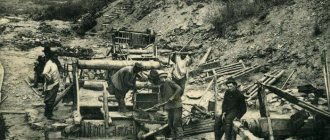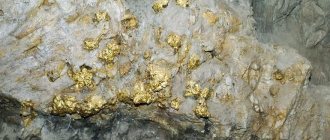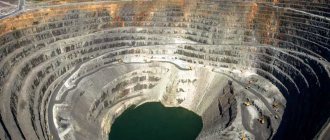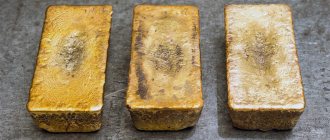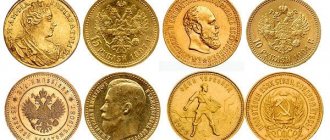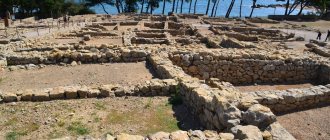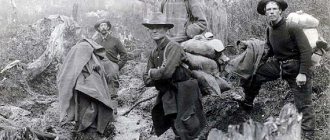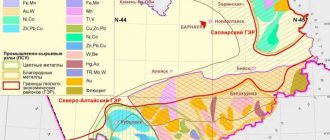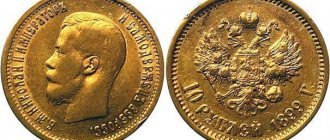Gold nuggets were found in the Socramento Valley in 1848. They caused a gold rush in California. This became a very important event in US history, which influenced the formation of the American state at the beginning of the 19th century. The media spread information about the discovery of gold.
Thousands of would-be gold miners set out to try their luck. They traveled to San Francisco by sea and land. The population began to amount to one hundred thousand people, although a year before this event about a thousand inhabitants lived there. The gold rush reached its peak in 1852. At the mines, gold miners produced a total of $2 billion worth of gold sand and nuggets.
Brazilian gold rush: from Indian hunters to gold hunters
The most famous period of mass gold mining is associated with the name of Jack London and his stories, but the gold rush in Alaska was almost the final chord in the entire history of unorganized searches for the precious metal. And the “infection” of this disease occurred much earlier and in a completely different region: the world’s first wave of the gold rush hit Brazil, and this happened at the end of the 17th century. It was started by bandeirantes (from the Portuguese bandeirantes - “standard bearers”) - hunters of Indians in the territory of the Portuguese colonies. Initially, they were engaged in the enslavement of the indigenous population, but when in the 1660s the Portuguese government appointed a reward for the exploration of mineral deposits, the bandeirants changed their occupation.
Bandeirants / ©Wikipedia
They formed small groups, which included not only Europeans, but also allied Indians - with their help, it was much easier for the bandeirants to survive in the humid tropics and make their way through the impenetrable forests of Brazil. The first large deposit was discovered in the Ouro Preto region in the mountains of Minas Gerais (today a state in eastern Brazil), but the center of the Brazilian gold rush was the bandeirant settlement of Vila Rica - a “rich city”, which would later receive the status of a city with the telling name Ouro -Pretu, “black gold”.
The gold rush in Brazil began in the 1690s and lasted until the first quarter of the 19th century - it became the most widespread and longest in history, and more than 400 thousand miners from Portugal and half a million slaves from Africa took part in it. In just one century, from 1700 to 1800, 1,000 tons of gold and 3 million carats of diamonds were mined here. This way of making money became so popular that many left the sugar cane plantations and moved to Ouro Preto, and by the 1730s, half of Brazil's population lived in the southeast - the government even had to move the capital from Salvador to Rio de Janeiro , because the main influx of capital took place in this region.
Siberian gold rush: taiga emperors and pineapple greenhouses
Gold rushes are often associated with California or the Klondike, thanks in large part to popular culture and cinema, but a massive hunt for the “yellow devil,” as gold prospectors call it, also raged in Russia. Moreover, it began even earlier than in the United States - at the end of the 1820s, and after the Scottish traveler and geologist Roderick Murchison published an essay on the similarity of rocks in Siberia and California, massive gold mining began in the west. In Russia, the gold rush swept primarily through the territories where today the cities of Kemerovo, Novosibirsk and, of course, Krasnoyarsk are located - this city still occupies a leading position among all gold-bearing regions of the country: last year alone 60 tons of the precious metal were mined here .

Siberia. Extraction of gold-bearing sand on the Berezovka River / ©Wikipedia
Gold is literally woven into the fabric of the history of Krasnoyarsk: it is no coincidence that even the city’s coat of arms since 1851 has depicted a lion holding a shovel in its hands - the main tool for working in the mine. However, mass mining of this metal began not here, but in the Tomsk province. A common version says that the first Russian prospector was the peasant Yegor Lesnoy, who discovered a gold mine on the Sukhoi Berikul River.
For some time he managed to keep it a secret, but already in 1827 rumors about his incredible find reached the Urals, and the Popov merchants immediately went to the Tomsk province. How they managed to find out the exact location of the mine is not known for certain: it is believed that they talked to Yegor Lesnoy’s assistant and she told them the secret.
In just a few months, merchants not only developed a mine on the Sukhoi Berikul River, but also explored deposits in the surrounding area, turning Siberia into the largest gold-bearing province of the country at that time. Mining took place on the Sukhoy and Mokroy Berikul, on the tributaries of the Kiya, the Salair Ridge, in the Krasnoyarsk, Achinsk, Kansk and Nizhneudinsk districts. The peak of gold mining occurred in the mid-1840s: then a total of 120 mines produced over 20 tons of metal—90 percent of all gold production in Russia.
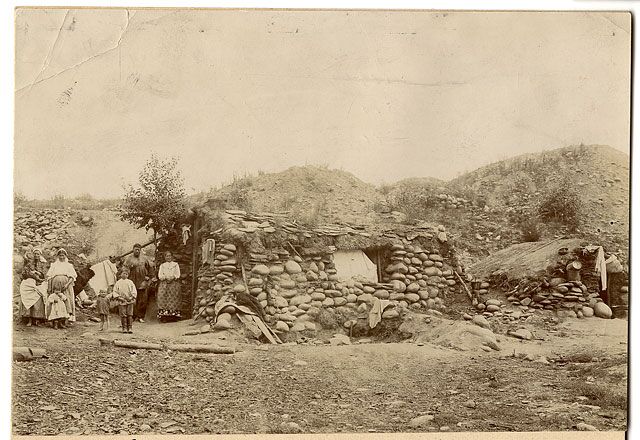
Siberia. House of gold mine workers. Minusink, 1911 / ©Wikipedia
Of course, not everyone got such fabulous wealth. The majority were left empty-handed, and the labor of peasant miners differed only slightly from convict labor, but history has also preserved for us amazing portraits of those who stumbled upon a gold mine in every sense of the word. Thus, the merchant Gavrila Masharov, who was lucky enough to discover more than a hundred placers of gold and become the richest man in Siberia with a fortune of millions, ordered himself a nine-kilogram medal made of pure gold. It was modestly written on it - “Gavrila Masharov: Emperor of the entire taiga.”
As if this were not enough, he built a real palace on Pokrovskaya Zaimka with glass galleries and greenhouses where pineapples were grown, and nearby he erected a velvet factory. The richest gold miner from Krasnoyarsk did not lag behind him: Nikita Myasnikov ordered business cards made of pure gold. Each of them cost 5 rubles - for this price you could buy 16 kilograms of sturgeon caviar.
The history of the Siberian gold rush was rich in truly unique finds. On January 10, 1898, a nugget weighing 31.6 kilograms was found at the Spaso-Preobrazhensky mine in the Eastern Sayan mountain range. It was called "Bull's Head" because of its distinctive shape. This was the largest find during the gold rush of the Krasnoyarsk Territory, and the stone itself ranks third among all nuggets in Russia. It is noteworthy that the prospectors stumbled upon it by accident - they literally tripped over a nugget lying under their feet on the way home. In the same year, 13 more large nuggets were discovered at the mine.
In total, during the active period of gold mining from 1828 to the end of the 1880s, more than 500.5 tons of gold were mined in Siberia, during which time the region attracted about 100 thousand miners. Further exploration of other potentially rich mines and deposits was affected by the socio-economic situation in the country: the First World War, revolution, crisis and civil war were just around the corner, so there was no talk of escalating the fever and spreading it beyond the borders of Siberia.
Gold Rush in the USA: prop the door with a nugget and invent jeans
In the United States, the gold rush took place in several stages, and different regions became its centers. The first wave occurred in North Carolina: in 1799, the boy Conrad Reed, who lived with his parents on a farm, discovered a large stone in a stream. He brought it home and showed it to his father, but he could not understand the true value of such a find. However, the nugget was still used: for several years it lay on the floor and propped up the door. And only when the stone was accidentally cleaned, it became clear that in the hands of the farmers was a real jewel weighing several kilograms. The next day, in the same stream, father and son found another, larger nugget, and from that moment on, North Carolina was gripped by a gold rush: hunters for the precious metal from all over the country began to flock here.
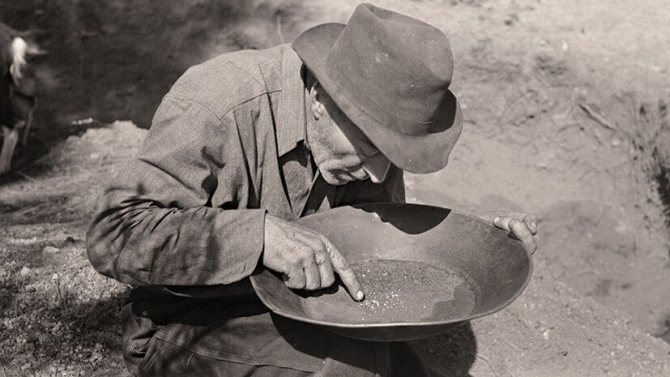
USA. Prospector in search of gold / ©russian.rt.com
Mining was carried out mainly in shallow waters, and very quickly the placer deposits were exhausted. Georgia took over the baton from North Carolina, where in 1828 farmer Benjamin Parks, while hunting near the town of Nucklesville, stepped on a stone the size of an egg - the find, upon closer examination, turned out to be a nugget. In just a year, about 15 thousand prospectors came here from North Carolina and other states. One of their largest settlements was even called Auraria, from the Latin aurum - “gold”. But the well-being of some, as often happens in history, is built on the misfortune of others: the district where the gold hunters came belonged to the Cherokee Indians, who were expelled from their native land to Oklahoma.
Their road to their new place of residence was called the “Trail of Tears”, since in the process of forced migration the Cherokees lost about a quarter of the tribe. Auraria itself very quickly turned into a ghost town, as miners abandoned it as soon as the gold ran out - this happened around 1840. However, having subsided in one place, the fever flared up in another, and already in 1848 the epicenter shifted to California, where one of the most famous and studied pages in the history of mass spontaneous gold mining began.
Gold dust was found at the sawmill of entrepreneur John Sutter on the American River, but Sutter himself was not at all happy about this turn. He understood that if the workers found out about this, they would drop everything and go wash the sand, so the entrepreneur tried to keep everything a secret. But in vain: as soon as the workers heard rumors about the gold-bearing river, they really rushed to look for the precious metal, forgetting about everything. Not only Americans, but also prospectors from Australia, Europe, Asia and Latin America went to try their luck - a total of more than 300 thousand people, who later became known as the “people of ’49.”
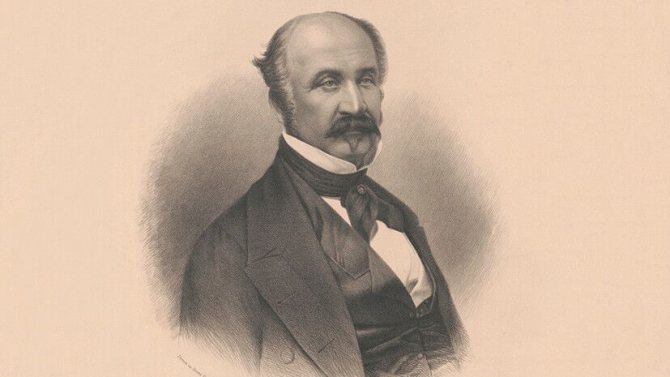
John Sutter / ©russian.rt.com
The fever in California lasted 12 years: during this time the population increased 27 times, all the necessary infrastructure appeared (schools, hospitals, churches, an extensive system of good roads), the agricultural sector developed noticeably, a system of laws was created, and San Francisco became a large, prosperous city. city, and in 1850 California officially became part of the United States. In addition to the large-scale economic consequences, the gold rush also gave the world, at first glance, quite ordinary and everyday things, which, however, would later become an integral part of life. So, we owe jeans to the California fever.
Entrepreneur Loeb Strauss, born into a Jewish family in Bavaria, immigrated to the United States in 1847. Here he changed his name to Levi Strauss and became actively involved in trading. At first it was tools and dry goods, and later he switched to selling fabric. In 1853, the entire batch of canvas pants sold out to California prospectors in the blink of an eye. Then Loeb realized: he had found his gold mine, which had nothing to do with metal mining. At the same time he founded, but instead of canvas he used a different fabric. It was made in the French city of Nîmes, which is why it was called “denim”. Levi's jeans are still in great demand.

Levi Strauss / © russian.rt.com
California Republic
Flag of the California Republic (1890 photo)
In May 1846, war broke out between the United States of America and Mexico. On June 14 of the same year, several American settlers in the Californian city of Sonoma, unaware of the outbreak of hostilities, captured a Mexican military garrison, arrested the commandant and announced the creation of a new state, independent of Mexico, the California Republic.
The president of the new republic, William Eade, was elected, but in fact the rebels did not create a full-fledged government, the California Republic was not recognized by any state in the world, and even in California itself, not everyone knew about the uprising. When U.S. Army Major John Fremont took command of the region on behalf of the United States of America with sixty soldiers twenty-six days later, the rebel grizzly bear flag was replaced by the U.S. Stars and Stripes (later the bear flag of the California Republic served as the basis for creation of the California state flag). On July 7, 1846, three US Navy ships captured the port of Monterey, finally confirming California's ownership of the United States.
Australian Gold Rush: revolutionary spirit
In 1851, Melbourne separated from New South Wales (today Australia's most populous state, where Sydney is located), and the independent colony of Victoria was formed. Only a few weeks passed, and the first gold deposits were discovered in this area in the Anderson River area (near the settlements of Beechworth, Ballarat and Bendigo). The discovery immediately attracted the attention of the colonists, and the gold rush could not be stopped. It lasted until the end of the 1860s and turned Victoria into the most gold-bearing state in the world, and Ballarat into the largest gold mining center.
It was during the Australian gold rush that one of the largest nuggets in human history was found - the “Welcome Stranger”. On February 5, 1869, two miners, John Deason and Richard Oates, working in a small town in Victoria, were pulling out a wagon stuck in the mud. In the process, it seemed to them that they had stumbled upon something solid, and then the legendary intuition of gold miners came into play: the friends felt that they needed to dig deeper, armed themselves with picks and quickly unearthed a block of stone.

Australia. Excavation of “The Welcome Stranger” / ©Wikipedia
It turned out that they had stumbled upon a huge nugget of such an impressive size that there was not even a suitable scale anywhere to find out its exact mass. I had to cut the find, melt it into ingots and send it to England. The largest known nugget is often called the “Holtermann Plate,” but this formulation is not entirely correct. Strictly speaking, it cannot be called a nugget due to the large amount of quartz that was part of its composition. The “Holterman Plate” was part of a gold mine, and it was discovered in 1872 in Australia. Its weight reached 286 kilograms, of which 57 were pure gold.
As in the case of California and San Francisco, the gold rush completely transformed not only the appearance of Victoria, but also the internal structure of the state. Along with thousands of miners, radical changes also came here: for example, sheep farming, which was the basis of Victoria’s economy, was replaced by powerful industrial development, and farming communities began to form.
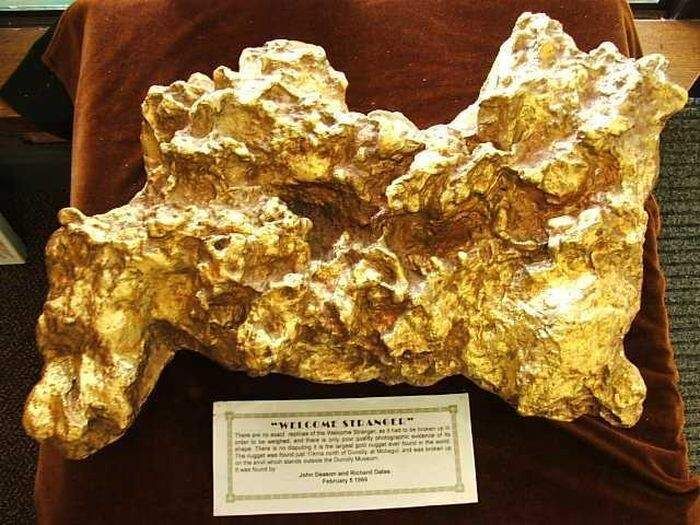
“Welcome Stranger” / ©bbc.com
Every week, about two tons of gold were sent to Melbourne, where the Victorian Treasury was located, and transport links were needed to transport the metal, so a railway system was developed. The population of the colony also increased noticeably: if in 1851 there were 77,345 people in Victoria, then 10 years later there were already 538,628 people living here, and on the mainland as a whole there was a sharp increase in population - almost three times. Melbourne gradually became one of the largest cities in the British Empire.
Demographic changes inevitably caused land shortages and social tensions, which eventually became the cause of the 1878 rebellion. There were other negative consequences of the gold rush: as gold reserves depleted, statements about the need for land and political reforms and the introduction of protectionist measures began to sound increasingly louder.
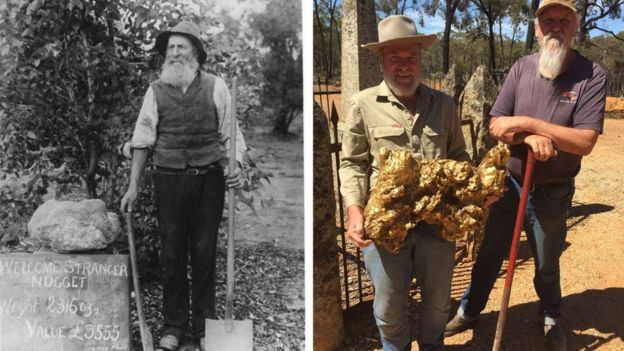
Australia. John Deason and “The Welcome Stranger” / © bbc.com.
After the first Chinese settlers arrived in Victoria in the mid-1850s, when the fever was at its peak, riots, looting and murder began, the government imposed high entry taxes. All these sharp contradictions subsequently led to the formation of the “White Australia Policy,” which reached its peak on the eve of the First World War.
John Sutter
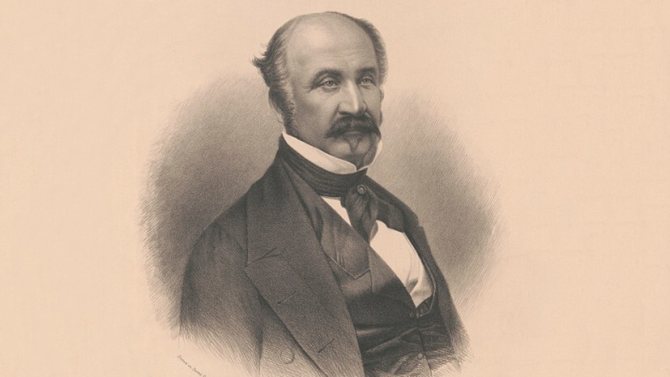
0
As John Sutter predicted, gold did not bring him anything good. His possessions were captured by visiting adventurers, and his farms were plundered. The entrepreneur waged long litigation in Washington, but received only a pension from the government. The authorities intended at a certain stage to pay him compensation in the amount of $50 thousand, but never did so. Sutter's son John Augustus founded the city of Sacramento, but then quickly sold the land and went to Mexico, where he became a businessman and American consul. However, at the end of his life, things did not go well for him, and after his death, the remains of the Sutters’ Mexican property were confiscated during the next revolutionary events. John Augustus's wife and children returned to California without money at the end of the 19th century. Nevertheless, the Sutter name lives on in American memory. Streets, schools, hospitals, as well as the city of Sutter Creek, Sutter County and a mountain range located near the Pacific coast are named after them.
